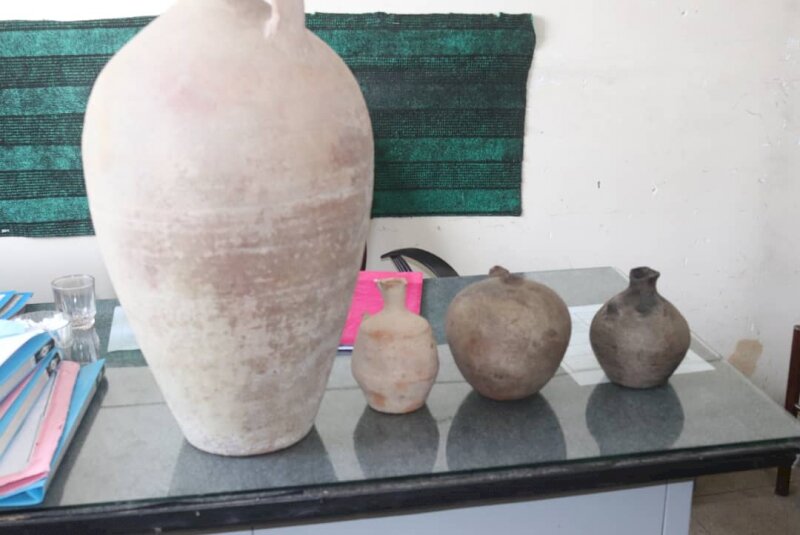Police seize Iron Age, Islamic-era jugs from smuggler

TEHRAN – Iranian police have recently confiscated four earthenware jugs from a smuggler in the city of Miandoab, northwestern West Azarbaijan province, a senior police official in charge of protecting cultural heritage has said.
The relics, which are estimated to date back to the Iron Age and Islamic times, have been discovered from an antique dealer in the historical village of Yarijan following reports from locals and cultural heritage aficionados, CHTN quoted Behzad Hejabi as saying on Sunday.
The culprit was surrendered to the judicial system for further investigation, the official added.
Iron Age is the final technological and cultural stage in the Stone–Bronze–Iron Age sequence. The date of the full Iron Age, in which this metal, for the most part, replaced bronze in implements and weapons, varied geographically, beginning in the Middle East and southeastern Europe about 1200 BC but in China not until about 600 BC, according to the Encyclopedia Britannica.
In Iran, the term Iron Age is employed to identify a cultural change that occurred centuries earlier than the time accorded its use elsewhere in the Near East, and not to acknowledge the introduction of new metal technology
As mentioned by Encyclopedia Iranica, Iron artifacts were unknown in Iran until the 9th century BC (the cultural period labeled Iron Age II), centuries after the phase designated as Iron Age I came into existence.
Iranian sites with levels identified as dating to the Iron Age were first excavated in western Iran at Sialk, and later in northwestern Iran around the west, east, and south shores of Lake Urmia, close to the Zagros mountains bordering Mesopotamia and Anatolia. These sites remain to date the best-documented full-range Iron Age sites in western Iran.
Written sources are rare at Iranian Iron Age sites, and locally written texts are non-existent. Indirect historical reference to the region begins in the 9th century BC when Assyrian royal texts first refer to various polities in northwestern and western Iran; these references continued into the 7th century.
However, relating the Assyrian-named polities with on-the-ground sites is difficult; in fact, not one excavated Iranian Iron Age site has been conclusively identified by its ancient name—although suggested identifications have been brought forth.
The term Islamic art not only describes the art created specifically in the service of the Muslim faith (for example, a mosque and its furnishings) but also characterizes the art and architecture historically produced in the lands ruled by Muslims, produced for Muslim patrons, or created by Muslim artists. As it is not only a religion but a way of life, Islam fostered the development of a distinctive culture with its own unique artistic language that is reflected in art and architecture throughout the Muslim world.
West Azarbaijan embraces a variety of lush natural sceneries, cultural heritage sites, and museums including the UNESCO sites of Takht-e Soleyman and Qareh Klise (St. Thaddeus Monastery), Teppe Hasanlu, and the ruined Bastam Citadel.
The region was home to several ancient civilizations. According to Britannica, it was conquered by Alexander the Great in the 4th century BC and was named Atropatene after one of Alexander’s generals, Atropates, who established a small kingdom there. Ultimately, the area returned to the Persian (Iranian) rule under the Sasanians in the 3rd century CE.
ABU/
